This example shows how three syllables were organized:
/… e t â r e …/
from the utterance
Petâr e papa
The sequence is taken from an X-ray motion film of Bulgarian speech.
The colours of each phoneme in /… e t â r e …/
correspond to the colours in the diagrams below
1. Sequence /et/ (film frames 5-12)
2. Sequence /etâ/ (film frames 12-17)
3. Sequence /tâ/ (film frames 17-24)
4. Sequence /âr/ (film frames 24-26)
5. Sequence /âre/ (film frames 26-31)
1. Sequence /et/ (film frames 5-12)
Activity for et during the e vocoid (Petâr …)
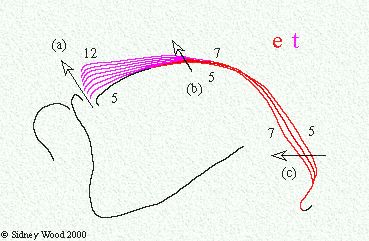 |
Simultaneous activity for e and t(b) Tongue body approach for e towards the hard palate during frames 5-7.
|
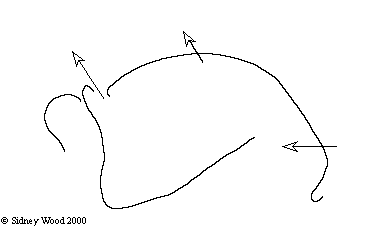 |
The corresponding simultaneous movements:Of the tongue body for e, see (b) and (c) above.
|
Top
2. Sequence /etâ/ (film frames 12-17)
Activity for e t â during the t occlusion (Petâr)
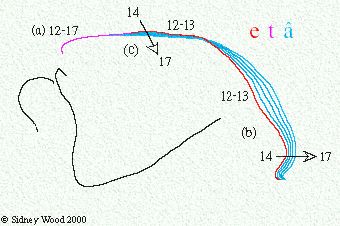 |
Simultaneous activity for e, t and â during the t occlusion(a) Continued tongue blade hold for t occlusion during frames 12-17.(b, c) Continued tongue body hold for e during frames 12-13 (b, c). Then tongue body approach for âduring frames 14-17. |
 |
The corresponding simultaneous movements:The movement of the tongue body for â away from the e posture, see (c) and (b) above, while the anterior part of the tongue blade was held in position for the t occlusion (a).This movement for â during the t occlusion meant that the t release was not palatized (frame 18, see part 3 next). |
Top
3. Sequence /tâ/ (film frames 17-24)
Activity for t â during the first part of the â vocoid (Petâr)
 |
Simultaneous activity for t and â during the first part of the â vocoid:(a) Tongue blade withdrawal of t during frames 17-24.(b) Continued tongue body approach of â during frames 17-22. |
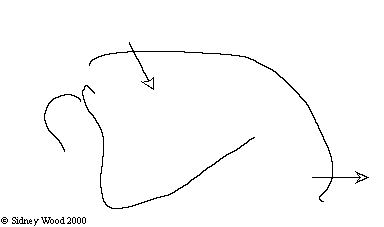 |
The corresponding simultaneous movements:Tongue blade withdrawal of t from the occlusion, see (a) above.
|
Top
4. Sequence: /âr/ (film frames 24-26)
Activity for â r during the latter part of the â vocoid (Petâr)
 |
Simultaneous activity for â and r during the latter part of the â vocoid:(a) Tongue blade approach of r during frames 25-26.(b) Tongue body hold of â during frames 24-26. |
 |
The corresponding simultaneous movements:Rapid tongue blade approach with upturned tip for r, see (a) above).
|
Top
5. Sequence: /âre/ (film frames 26-31)
Activity for â r e during the r constriction and the e vocoid (Petâr e)
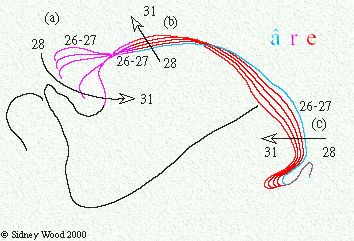 |
Simultaneous activity for â, r and e during the r constriction and the first part of the e vocoid:(c) Continued tongue body hold of â during the r constriction frames 26-27.(a) Tongue blade hold of r during its constriction frames 26-27.(a) Tongue blade withdrawal of r during frames 28-31 (the first part of the e vocoid).(c) Tongue blade withdrawal of â from frame 28 (the first part of the e vocoid). Note the long hold of the â posture right to the end of the r constriction, which was consequently not palatized for the next vowel e.(b, c) Tongue body approach of e during frames 28-31. |
Sorry, there is no movie sequence yet. |
Top
